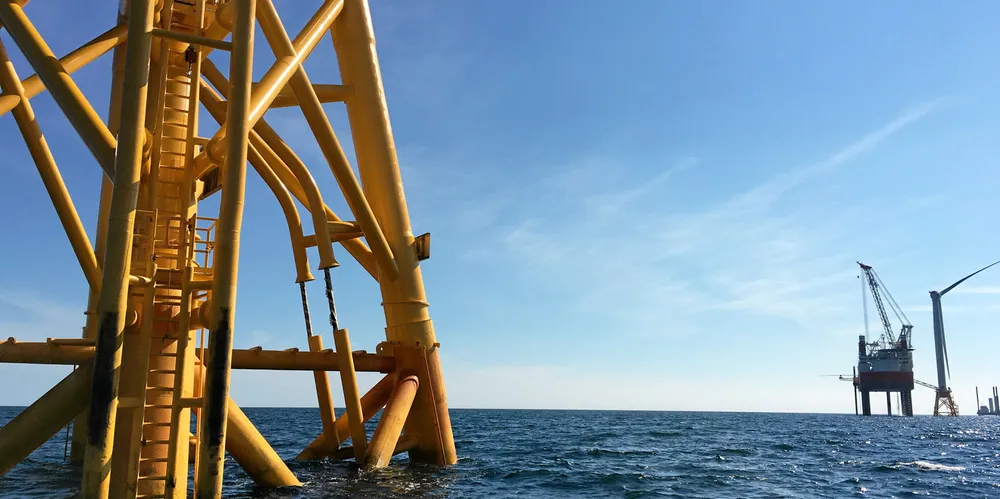Multi-user tack on New York offshore wind export 'could cut $500m' from grid cost
Study comparing open access grids to project-tied radial lines from coming generation of projects in US Atlantic also points to reduced environmental footprint

New York State could slash total transmission costs by at least $500m and enable the next 7.2GW of offshore wind capacity by employing an ‘open access’ multi-user approach as opposed to laying radial export lines from individual projects, according to a new study by the Brattle Group.
Other benefits from an integrated grid design would include better utilisation of lease areas and limited points of interconnection, greater competition from transmission developers and facilitation of commercial off-take arrangements with non-utility customers.
“Transmission development that is independent from generation can also greatly diminish the need, costs and risks of disruptive onshore grid upgrades, a key consideration given New York’s history of delays and budget overruns in that regard,” said the authors of the study, which was prepared for Anbaric, a developer of high voltage direct current (HVDC) open-access transmission systems for offshore wind developments in the US Atlantic.
“At the scale considered by New York, a planned approach to offshore transmission will significantly reduce the environmental footprint and the overall costs and feasibility risks of offshore wind generation,” said Johannes Pfeifenberger, a Brattle principal and a study co-author.
Advance planning would reduce marine cable miles by 59%, while higher capacity HVDC cables would allow better use of constrained access routes through New York harbour.
New York has committed to 9GW of offshore wind by 2035, the most by any US state, but will likely require between 14GW and 24GW to achieve its 100% decarbonisation goal by 2040, according to Brattle.
Phase one offshore procurement involved three contracted projects totaling 1.826GW –Sunrise Wind, 880MW, and South Fork, and Empire Wind, 816MW – that will employ radial lines to export electric power, with the first two projects wired into substations located on Long Island and Equinor linking into another substation in Brooklyn.
Last month, New York issued a second solicitation for up to 2.5GW of offshore wind capacity, the largest state round yet, with at least 1GW of procurement planned. Bids are due by 20 October with awards and contracts expected to be executed in the fourth quarter, respectively.State officials said projects selected will also design and construct their own radial lines for several reasons. First, in the absence of operational projects, to continue getting New York’s offshore wind programme up and running as soon as possible.
Second, more analysis is required before the state could commit to a potential network alternative. By year-end, the New York Public Service Commission (PSC) is due to complete a major study of the state’s transmission system and recommend improvements to allow integration of 9GW offshore wind capacity.
Potential grid solutions for all renewables are also under analysis by the state’s independent grid operator; the New York Power Authority, a public utility, and New York State Energy Research & Development Authority (NYSERDA), which oversees the offshore wind solicitation process.
Third, nearer-term offshore wind transmission network planning has been complicated by a frozen federal auction process for proposed lease areas facing southern Long Island and northeastern New Jersey – the so-called New York Bight region.
Governor Andrew Cuomo’s administration has been requesting additional auctions since 2018 - Equinor has the only area under lease with potential 2GW capacity.
The schedule has been delayed by Covid-19 impacts and the Department of Interior’s focus on completion of permitting by December for Vineyard Wind, the nation’s pioneering large-scale project off the coast of Massachusetts.
This means next round bids will largely come from areas off Massachusetts, New Jersey and Rhode Island, requiring longer radial lines to reach the metropolitan New York City load or injections in neighbouring regional grids operated by ISO New England and PJM Interconnection.
New York would prefer to have offshore wind energy flow directly into its own bulk electric grid managed by an independent operator, bypassing potential interface issues with other multi-state systems.
This also appeals to most project developers in the absence of a regional offshore wind grid, whose future development New York officials believe will be necessary as the sector scales later this decade.
(Copyright)